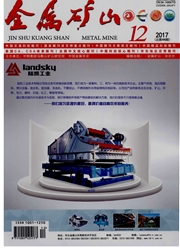

 中文摘要:
中文摘要:
通过实测扎西康整装勘查区内1条东西向岩石地球化学剖面及南部错动洞1条岩石地球化学剖面,研究主要成矿元素在矿区、地层、岩体的含量变化规律,发现Ag、Au、W均表现出由矿区向两侧延伸,元素含量逐渐降低的趋势;Pb、Zn含量总体上处于背景区域,二者在选场范围表现出高值异常;Sb由西向东表现出一路降低的趋势。结合R型聚类分析的结果,元素的异常分布特征对成矿物质的来源方向有一定指示作用:地表地层的Pb、Zn和成矿作用关系不大;Au、Ag、W则可能是来源于深部物质,其中W的来源或许与南部错那洞花岗岩有关;Sb主要为来自西边的物质补给。错那洞花岗岩岩体与围岩在其接触带内发生过强烈的物质交换作用,岩体提供成矿物质的可能性较高。
 英文摘要:
英文摘要:
Through field investigation on a west-east rock geochemical section and a southern Cuonadong geochemical section in Zaxikang Metallogenetic Area, the variation of main ore-forming elements in mining area, strata and rock mass is studied. It is indicated that contents of Ag, Au, W gradually decrease from mining area to the sides ; contents of Pb and Zn lie in the background as a whole, and both show high abnormal value in the scope of selected area. Contents of Sb decrease from west to east. According to the R cluster analysis results, abnormal distribution of the element has a certain instruction function to find the source of metallogenic material. Pb and Zn in surface strata have less relationship with metallogenesis ; Au, Ag and W maybe come from the deep materials, and W may have some relationship with the southern Cuonadong granite; Sb may come from the supplement of western materials. Strong materials exchange process happens at contact zone of granite rock mass and surrounding rock in Cuonadong, and the rock mass providing metallogenic material is relatively high in possibility.
 同期刊论文项目
同期刊论文项目
 同项目期刊论文
同项目期刊论文
 期刊信息
期刊信息
